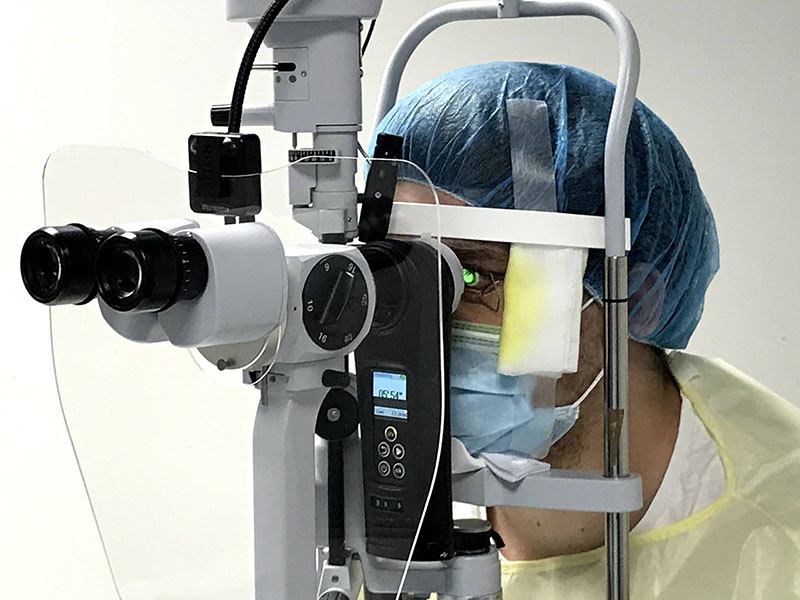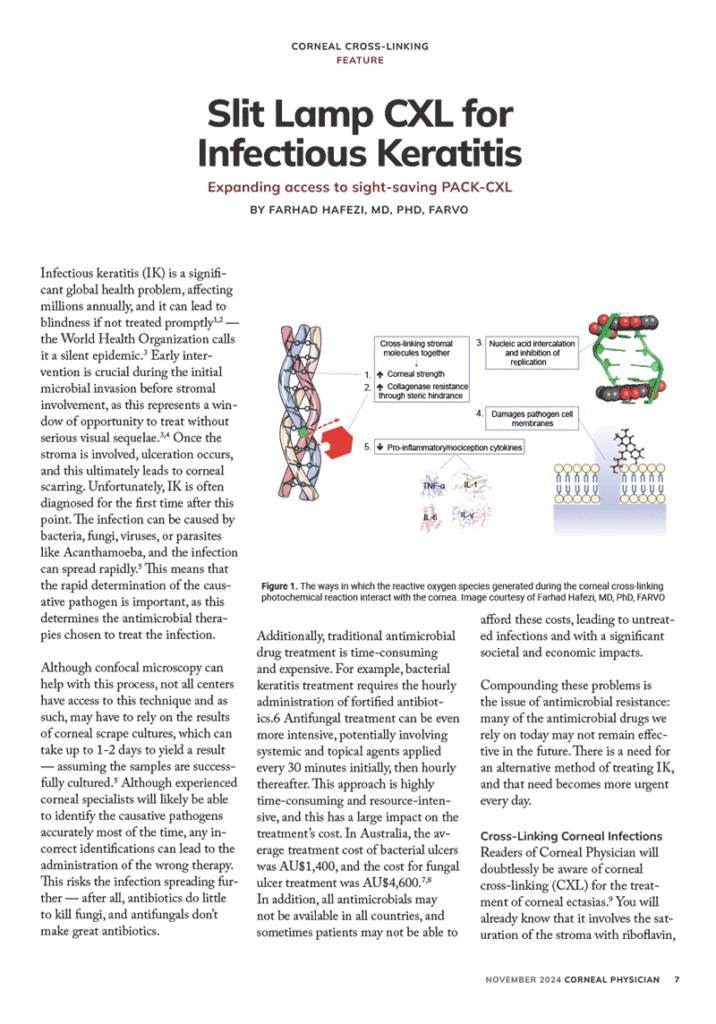In the evolving landscape of infectious keratitis treatment, a recent article published in Corneal Physician by ELZA’s Medical Director, Prof. Farhad Hafezi, MD, PhD, FARVO, introduces an innovative approach using slit-lamp CXL (corneal cross-linking) as a promising solution for difficult cases. Traditionally employed to strengthen the cornea in keratoconus patients, CXL is now emerging as a potential treatment for infectious keratitis, especially in cases where typical antimicrobial treatments have limited effect due to resistance.

How Slit-Lamp CXL Advances Infectious Keratitis Treatment
Infectious keratitis, often caused by bacteria, fungi, or parasites, can pose a significant challenge to standard treatments. This condition, marked by corneal inflammation, demands advanced methods when antibiotics or antifungals alone don’t suffice. Slit-lamp CXL leverages UV-A light and riboflavin, which when combined, can effectively target the infection site, helping sterilize the cornea while strengthening its structure.
What sets slit-lamp CXL apart in infectious keratitis treatment is its accessibility and convenience. Conducting CXL directly at the slit lamp means it can be done outside of the operating room, making it a more practical option for clinics without immediate access to surgical facilities. This is particularly valuable for treating infectious keratitis in underserved or rural regions. Additionally, slit-lamp CXL minimizes the need for epithelial removal, which reduces the invasiveness of the procedure and may enhance patient comfort without compromising therapeutic efficacy.
Slit lamp CXL in Corneal Physician
The initial clinical outcomes highlighted in Corneal Physician reveal promising results in managing infectious keratitis, with reduced infectious load and improved corneal stability, all achieved with minimal side effects. These findings point to slit-lamp CXL as a meaningful advance in infectious keratitis treatment, especially for cases that are resistant to conventional therapies. However, as we discuss in the article, further studies are essential to determine ideal dosing protocols and evaluate long-term outcomes.
Slit-lamp CXL could be a game-changer in infectious keratitis treatment, offering a streamlined, patient-friendly approach that meets the demands of modern corneal infection management. For a more comprehensive look at how this approach is reshaping options for infectious keratitis, explore the full article in the November 2024 issue of Corneal Physician.

